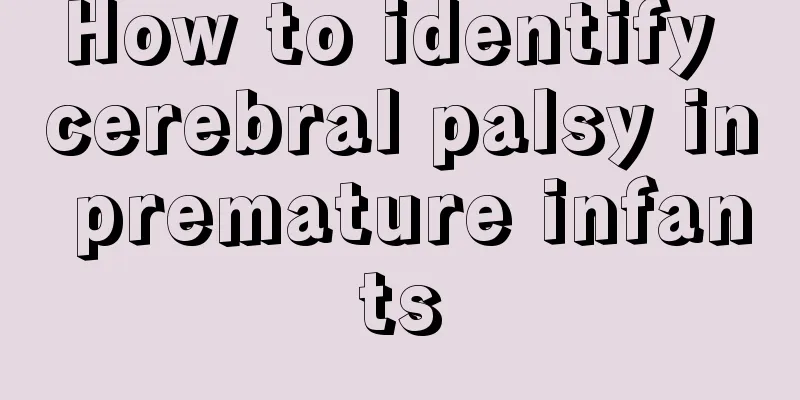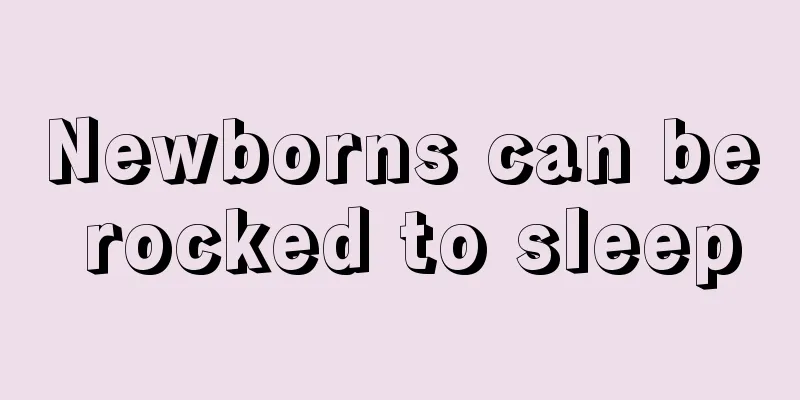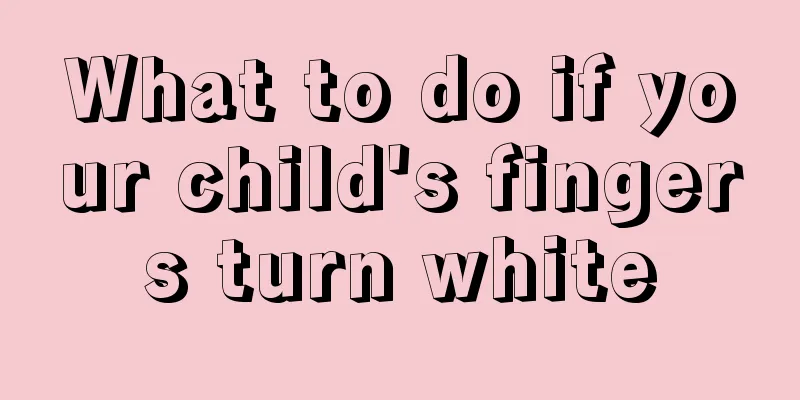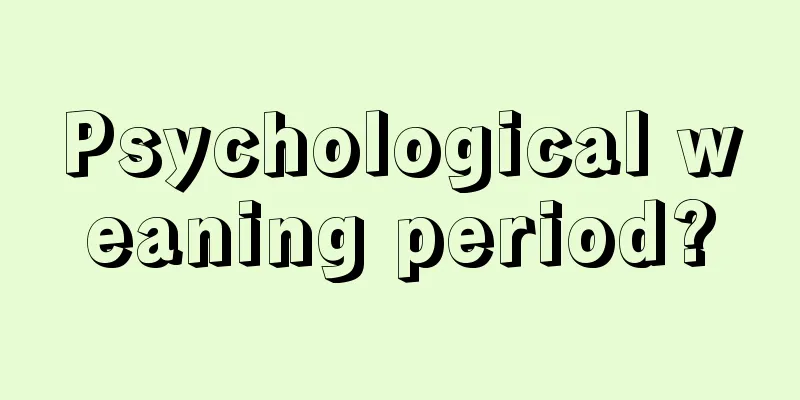How to identify cerebral palsy in premature infants

|
Cerebral palsy is a highly chronic brain disease that is difficult to correct. The onset of cerebral palsy not only brings great health problems to the patient himself, but it can also be said to be a lifelong disease that can cause great distress to a family. Therefore, families with children with cerebral palsy must receive scientific treatment. Only treatment can reduce the pain of cerebral palsy patients and their families. To treat cerebral palsy in children, we need to understand the cause of the disease, because cerebral palsy actually has many classifications. Only symptomatic treatment can minimize the harm of cerebral palsy to children's physical and mental health. Let's take a brief look at some common sense questions about cerebral palsy.How to enable children with cerebral palsy to live a normal life has become a common goal pursued by countless medical experts. Paralysis caused by brain disease is called cerebral palsy. Simply put, cerebral palsy is a paralysis-like symptom caused by brain damage. When the infant's brain is not yet fully developed, if it is damaged by ischemia or hypoxia, it will cause brain damage and lead to motor dysfunction. Children with cerebral palsy will have varying degrees of motor dysfunction. Some children are limp all over and cannot sit or stand; some children have tight and stiff muscles and cannot walk. Children with tense and stiff muscles all over their body are the main symptom of cerebral palsy. The traditional treatment method is to send the child to the neurosurgery department to surgically remove the nerves that control the child's limb movement function. Once these nerves are cut off, the child's legs can be completely relaxed. This method is called neurodestructive surgery. In the past, surgical methods of destroying nerves were once considered the classic way to relieve limb spasms. But this method has great flaws. First, it harms the child. Second, it is destructive, and the damage is irreversible and permanent. It is a way of treating the symptoms but not the root cause. If it is not handled properly or the degree is not controlled well, the child's legs will become as soft as noodles and he will lose the ability to stand and walk. The fetus is developing life in the mother's womb. If the fetus leaves such a safe environment too early and is exposed to direct external stimulation too early, it will be a huge risk to the fetus. When they are born, they often experience a process of hypoxia, and because they are too light, the nutrition their brain receives is far from enough. In such circumstances, the fetal brain will be damaged, which will lead to cerebral palsy. The reason why children with cerebral palsy have motor dysfunction depends on a bundle of nerves in the brain. This bundle of nerves controls human motor function. This bundle of nerves, buried deep in the brain, is most sensitive to hypoxia and ischemia. If it is in this state for a long time, the function of this bundle of nerves will gradually be lost. Once the function of this bundle of nerves is lost, the child will have motor dysfunction. Traditional nerve damage surgery is very harmful to infants and may even have a counterproductive effect. In fact, a non-invasive method of treating cerebral palsy appeared long before the birth of nerve-damaging surgery. This method is called rehabilitation therapy. In the 1950s, British doctors Carlo and Beda Bobas developed a rehabilitation method for children with cerebral palsy, which is called the Bobas Method. It is a classic treatment method for children with cerebral palsy. The core of this method is to promote normal reflexes and inhibit abnormal reflexes. Relax your muscles from a state of high tension through massage. The shortcoming of rehabilitation treatment is that it does not provide significant help to older children. Although it enables them to lead a normal life, they are still unable to walk normally. In fact, if the symptoms of cerebral palsy in children can be detected early and intervention is given immediately, the disease can be cured. They can lift their heads at two or three months old, roll over at four months old, sit at six months old, crawl at eight months old, stand at ten months old, and walk at twelve months old. These can be used to determine whether a child is likely to suffer from cerebral palsy. If children with cerebral palsy can receive rehabilitation treatment within six months of birth, the impact of cerebral palsy may be minimized. There is a huge gap in the treatment of cerebral palsy. The treatment and diagnosis of neurology are thorough and advanced, but the treatment cannot keep up; while rehabilitation can treat it, it often takes over too late. Many parents even think that their children cannot crawl at the age they should be able to crawl because of their weak constitution due to premature birth. Some experienced doctors can find clues that a child may have cerebral palsy through careful observation of the child. For example, when a baby is six months old, when an adult pulls up his hands, his head and body are not on the same level. This may be a precursor to cerebral palsy. Generally, if a child is found to have motor dysfunction within three months, it is called ultra-early stage, and six months is called early stage. During the examination, some auxiliary tools can also be used to check whether the child has cerebral palsy, such as using magnetic resonance imaging to observe the child's brain development, find abnormal parts, and even diagnose whether the child has cerebral palsy in the neonatal period. Now, in the medical field, the latest means of treating cerebral palsy is to inject botulinum toxin. Botulinum toxin can relieve spasmodic muscles. Its mechanism of action is mainly to block the connection between nerves and muscles. Botulinum toxin blocks the connection between acetylcholine and muscles without destroying the anterior membrane or affecting the storage and release of acetylcholine. Therefore, botulinum toxin has no destructive effect on muscles. This is a reversible effect. Botulinum toxin was first used for cosmetic purposes. It can be used to remove wrinkles. The reason why it can help remove wrinkles is that it relieves the tension of the wrinkle muscles and eliminates the tension between the muscles, so that the wrinkles can become loose, thereby achieving the effect of wrinkle removal. However, as the drug is metabolized in the human body, the effect of this drug will disappear after 3 months. The nerves will then regain control of the muscle tissue. These three months become an important period for treating cerebral palsy in older children. Generally, medicine will provide rehabilitation training to children during this period so that they can learn to walk with the correct posture. In this way, even if the nerves regain control of the muscles after three months and the muscle tension increases again, the children have already learned the correct walking posture, and their brains already have a habitual reflex arc for the concept of walking, and they will not return to the previous abnormal state. Pathogenesis It is currently believed that brain tissue hypoxia, ischemia, damage, and poisoning are the basic causes of cerebral palsy, and the pathological changes caused are mainly degeneration and necrosis of cerebral cortical nerve cells, softening and fibrosis of brain tissue. 1. Central Cerebral palsy is a central injury, that is, paralysis caused by damage to the nervous system above the anterior horn cells of the spinal cord (or the motor nuclei of the cranial nerves), and the lesions are in the brain. Any paralysis caused by damage to the anterior horn cells of the spinal cord and below is not considered central damage and cannot be diagnosed as cerebral palsy. Limb paralysis caused by poliomyelitis, sciatic nerve injury, etc. does not fall into the category of cerebral palsy. 2. Developmental Cerebral palsy is damage to the brain tissue during its growth and development. It refers to various causes acting on immature, growing and developing brain tissue rather than on mature brain tissue. Therefore, although certain intracranial diseases in adults, such as cerebral hemorrhage and cerebral infarction, can also cause limb movement disorders, they cannot be diagnosed as cerebral palsy because they do not act on the developing brain tissue but on the mature brain tissue, which does not conform to the developmental characteristics. The brain tissue of the fetus, newborn and infant from conception to infancy is in development, and any damage to the brain tissue caused by any reason during this period is consistent with the diagnosis of cerebral palsy. Brain damage before conception and after infancy cannot be called cerebral palsy, because problems before conception are mostly congenital hereditary neurological diseases and should be differentiated from cerebral palsy. Brain damage caused by various reasons after infancy should be named as a disease, such as sequelae of encephalitis, and should not be diagnosed as cerebral palsy. 3. Non-progressive The lesions of cerebral palsy are non-progressive, and the disease is characterized by no further progression. This point can be distinguished from diseases such as encephalitis and brain tumors. However, demyelinating diseases that are not obviously progressive or progress slowly, or congenital diseases, are difficult to distinguish from cerebral palsy. In addition, we often see many children with cerebral palsy in clinical practice. After being diagnosed, they do not receive treatment or are treated improperly for various reasons, and their symptoms become more and more obvious. This is because the abnormal posture and sensory conduction of the child's movement form a vicious cycle, causing the symptoms to continue to develop. Therefore, British scholar Dr. Bobath believes that the clinical symptoms of cerebral palsy are progressive at least before puberty, and the clinical manifestations change with growth. However, the lesions of intracranial damage in children with cerebral palsy are non-progressive. Parents should give their children massage and gymnastics at home according to certain methods, twice a day for 5-15 minutes each time, and strengthen active movement training, such as doing corresponding exercises such as raising the head, pulling to sit, turning over, sitting, crawling, standing and walking according to the increasing age of the child in months, to promote the development of motor tension. In this way, cerebral palsy in premature infants can be reduced by more than 2/3, and even if cerebral palsy occurs, the menstrual period can be significantly reduced. Enhanced active movement training 0-2 months Lie prone and raise your head. Premature babies should start prone exercises when they are 4 weeks old. One hour before feeding, when they wake up on an empty stomach, they should be guided to lift their heads in a prone position using words and toys. Train for 10 minutes each time, 4-6 times a day. Mother-child face-to-face training method. The child lies prone on the mother, and the mother can talk to the child to encourage the child to lift his head. Side-lying symmetrical position. Let the child lie on his side in bed, with both upper limbs and hands kept in the middle position of the trunk. This posture can control abnormal asymmetric posture and abnormal extensor muscle tension. March-April Prone head lift training. Continue to let the child perform prone head-lift training. Turn over. Use toys to induce the child to turn over. When helping the child to turn over, hold the child's hand with one hand and use the other hand to gently turn the child to the opposite side on the shoulder. Practice at least 7-8 times a day. Balance training. Place the child in supine position on a blanket, and two parents hold the two ends of the blanket and rock him left and right. 2-4 times daily. Hand-mouth coordination training. In supine position, let the child grasp both feet with both hands and put them to the mouth to practice hand-mouth-eye coordination movements. Grip training. Place the toy in the midline to encourage the child to extend his upper limbs forward and spread his fingers to grasp. Do this 7-8 times daily. May-June Sitting training. The child should spread his lower limbs, lean his trunk forward, and sit with his upper limbs supported in front of him. He can also practice sitting with his back leaning. Practice 5-6 times a day, 10 minutes each time. Crawl. Parents can use toys to tease the baby in front and support the soles of the baby's feet from behind to help the baby move forward. 5-10 minutes each time, practice 7-8 times a day. Active grip training. Have the child sit and place toys in front of the body at different distances and heights. Let the child practice reaching for the toys from different distances and heights. Practice 5-6 times a day. 10 minutes each time. July-August Crawl on hands and knees. Perform crawling exercises on your hands and knees. It is required to climb 50-100 meters per day. Pick-up action training. Stand the child and support his knees to prevent them from bending. Place toys in front of the child and let him practice bending over to pick them up. The degree of bending goes from high to low. From easy to difficult. Practice this movement 2-4 times a day, 10-30 times each time. The action of pinching with both hands. At around 7 months old, the child is able to use his thumb. At this time, you can give him some small toys to let him practice using his fingers, and help him progress from grasping with a handful to fine movements such as using the thumb and other fingers to pinch. September-December Stand with arms, squats, stand alone and walk alone. The harm of cerebral palsy to a person is undoubtedly fatal. If a child in the family is unfortunately suffering from cerebral palsy, then parents should try their best to treat the child. At the same time, they should increase their confidence in the treatment and pay more attention to these children so that they can suffer less from the disease and laugh more. |
<<: Allergic constitution in children
Recommend
What are the guidelines for resuscitation of neonatal asphyxia?
When hearing the words “Neonatal Asphyxia Resusci...
Causes of tachycardia in children
Children will have some health problems in the pr...
What are the dangers of excessive foreskin in adolescents
Generally speaking, surgical treatment is often u...
What procedures are required to change a child's surname?
It is the idea of the whole family to give the ...
What to do if your baby becomes constipated after changing milk
For babies, the most important things are eating,...
Can children eat pearl powder?
Pearl powder is a traditional Chinese medicine. I...
What is the reason for the baby to hold back his blushing face?
Many parents will find that their babies tend to ...
At what age is it best to wean a child?
Every mother encounters a problem, which is the p...
What to do if your one-year-old baby has repeated fevers
It is a common phenomenon for babies to have a fe...
What to do if your child has dry and itchy skin
Dry and itchy skin is something we experience in ...
Why do children sweat?
Adults always sweat when the weather is hot. But ...
Why does my baby's knees make a crackling sound when he moves them?
People need to pay attention to the baby's jo...
Slow brain development in children
Many children will have slow brain development wh...
What to do if children have a cough
The beginning of every school year is a peak seas...
What to do if the baby does not drink breast milk
The time when a baby is just born is a critical p...









